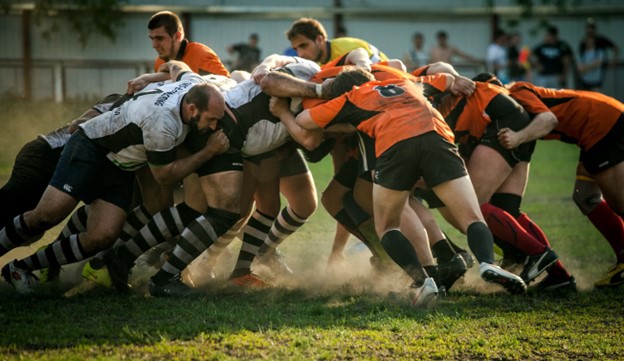The Dangers of Rugby
The Moscow Rugby Team in a clash of strength and determination.
Rugby is a popular sport around the world, especially in countries like New Zealand, the United Kingdom, Ireland, Australia, and Japan. It’s similar to American football, but there are some key differences. A rugby ball is spherical, and rugby has fewer restrictions than American football concerning how the ball may be handled to score goals. Rugby players may hold the ball as they advance, but American football players cannot. Rugby also involves more sheer force in advancing towards the goal.
Many people know about the dangers associated with American football, but what of rugby?
The British Journal of Sports Medicine found that injuries most commonly affect the knee, followed by the ankle and the shoulder. Bones, joints, and ligaments are all at risk of damage. Tackles and scrums are often when players are most susceptible to injury. (Scrums are a way of starting a play, and they involve lines of opposing players that each tries to advance while pushing the other back. This is similar to American Football.)
Like American football, concussions can be a great risk. (This is when the brain is shaken within the skull, temporarily resulting in impaired brain function.) With aggressive tackles and contact with enemy players, rugby players are actually more vulnerable to this injury than those in American football, according to the Journal. Multiple concussions can lead to more serious conditions, such as chronic traumatic encephalopathy, which can create amnesia and depression in the afflicted.
Meanwhile, Dr. Sam Barke, the Head of Sports Medicine at Meliora Medical Group, is an expert on head injuries and how to mediate them. He says that tackling has increased in rugby, and players have gotten larger and more imposing. All this increases injuries and their severity.
Many people enjoy rugby, so what can players, coaches, and officials do to minimize the risks of injury? Coaches can teach their players superior tackling techniques to lower the dangers. Helmets and mouth-guards are essential to protect the head and mouth. Some physicians and first responders should attend Rugby events or be nearby in case someone gets hurt. Barke adds that head injury awareness and safety laws help to prevent injuries. Elite games use the Head Injury Assessment to detect if a concussion has occurred, and rugby at school uses the “Recognize and Remove” rule to get hurt players off the rugby field. Barke recommends caution when returning to the game. The injured should rest for two weeks and only gradually continue play after gaining approval from their doctors. He notes that the pool of research into athletic risks is only growing, and game organizers must stay up to date with the latest knowledge
On the other hand, taking risks is important to building character, and rugby is an excellent way for people to exercise, have fun, and take these risks. We should not abandon rugby as a sport. Complicated injuries can happen in all sports, and that’s okay as long as athletes know the dangers and have options to prevent and treat injuries. Some doubt if rugby is worth playing in light of all the risks, so rugby organizers are called to find a good balance between safety and allowing rugby to remain dangerous and exciting.
Sources:
https://www.planetrugby.com/the-popularity-of-rugby-union-across-the-world
https://www.theupcoming.co.uk/2020/03/13/football-vs-rugby-key-similarities-and-differences/
https://fluentrugby.com/is-rugby-dangerous/


